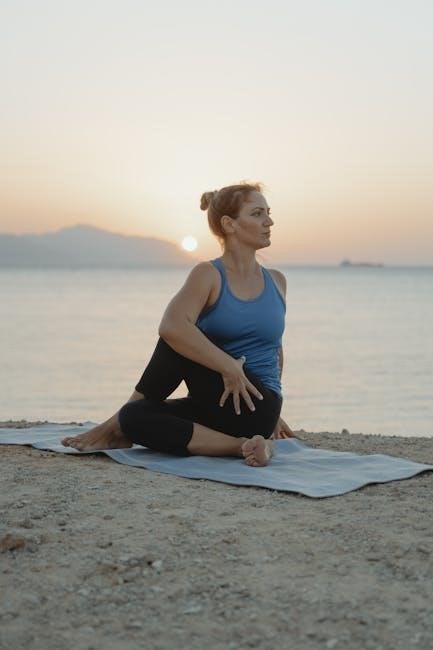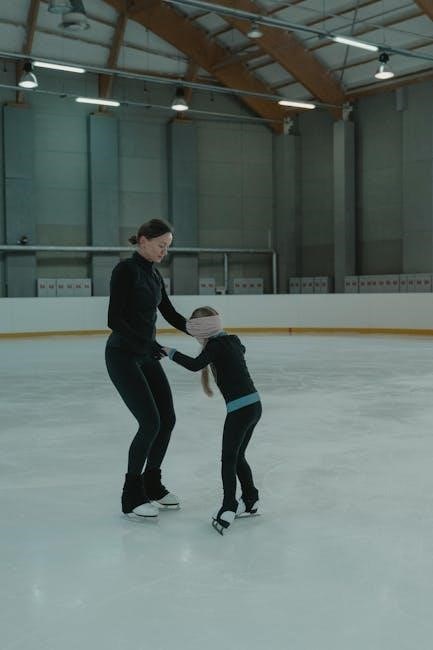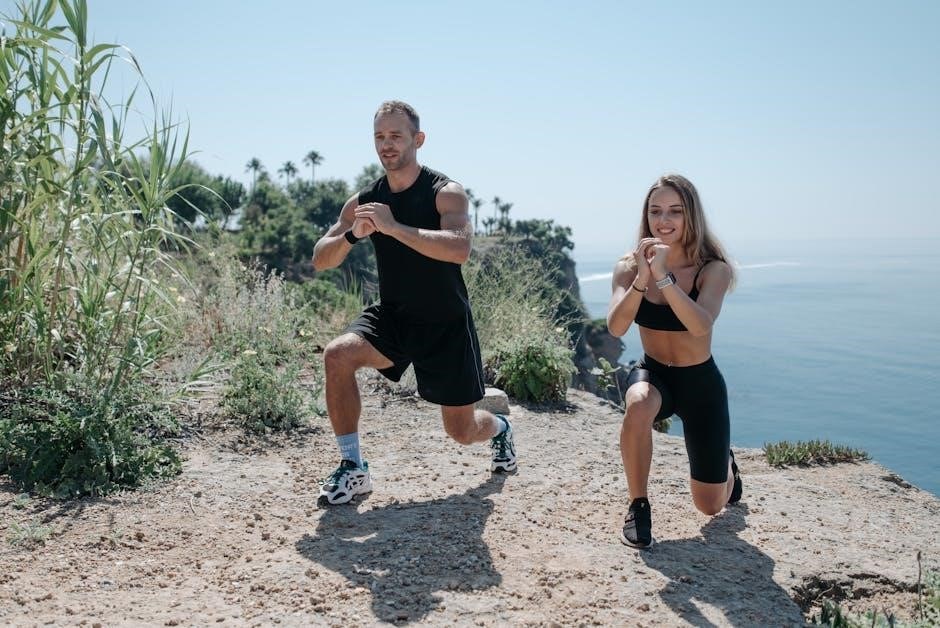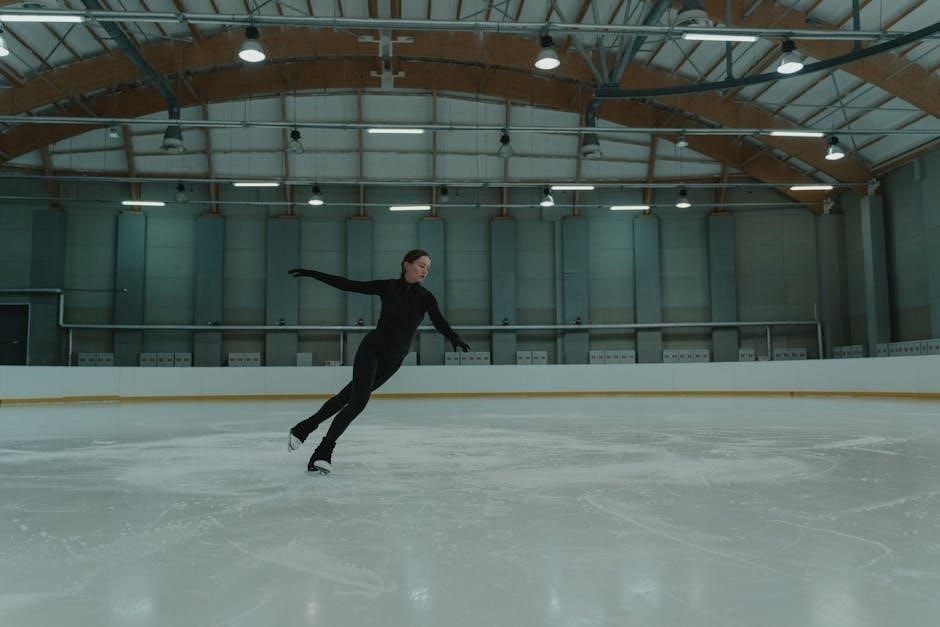De Quervain’s tenosynovitis is a condition affecting the tendon sheath on the thumb side of the wrist, causing pain and inflammation due to tendon irritation in the tunnel․
1․1 What is De Quervain’s Tenosynovitis?
De Quervain’s tenosynovitis is a condition causing pain and inflammation on the thumb side of the wrist․ It occurs when tendons in the thumb become irritated as they pass through a narrow tunnel, leading to swelling of the tendon sheath․ This condition, also known as De Quervain’s, often results from repetitive hand or thumb movements, making everyday activities uncomfortable․ It is characterized by tenderness and limited mobility in the affected area, particularly during gripping or twisting actions․
1․2 Symptoms and Causes
Common symptoms of De Quervain’s tenosynovitis include pain and swelling on the thumb side of the wrist, difficulty gripping, and limited thumb movement․ The condition often arises from repetitive hand or thumb movements, such as twisting or gripping, which strain the tendons․ Activities like heavy lifting, skiing, or even texting can contribute to its development․ Inflammation of the tendon sheath leads to discomfort and restricted mobility, particularly during activities involving the thumb and wrist․
Overview of De Quervain’s Exercises
De Quervain’s exercises aim to restore wrist and thumb mobility, reduce pain, and strengthen tendons through controlled movements and gradual progression, improving overall hand function effectively․
2․1 Benefits of Exercises for De Quervain’s
Exercises for De Quervain’s provide numerous benefits, including pain reduction, improved wrist and thumb mobility, and strengthened tendons․ They enhance flexibility, reduce inflammation, and restore functional movement․ Regular practice can prevent further irritation and promote faster recovery․ Gentle stretching and strengthening exercises help maintain proper tendon alignment, reducing the risk of recurrence․ Consistency in performing these exercises is key to achieving long-term relief and restoring normal hand and wrist function effectively․
2․2 Types of Exercises: Stretching, Strengthening, and Isometric
De Quervain’s exercises include stretching to improve flexibility, strengthening to build tendon resilience, and isometric exercises for controlled movement․ Stretching focuses on wrist and thumb mobility, while strengthening exercises use resistance to enhance tendon strength․ Isometric exercises, like thumb lifts, improve muscle endurance without joint movement․ These exercises collectively target pain reduction, improved function, and tendon health, aiding in recovery and preventing recurrence when performed consistently and correctly․
2․3 Importance of Controlled Movement
Controlled movement in De Quervain’s exercises ensures gradual tendon healing and prevents further irritation․ By performing exercises slowly and deliberately, individuals avoid overexertion, which could worsen inflammation․ Proper form and pacing help strengthen tendons effectively while minimizing discomfort․ This approach also enhances joint stability and promotes balanced muscle development, crucial for long-term recovery and functional improvement․

Key Exercises for De Quervain’s
Key exercises for De Quervain’s include radial deviation, thumb stretching, and isometric thumb exercises to relieve pain, improve strength, and promote recovery․
3․1 Radial Deviation Exercise
Radial deviation involves gently lifting your wrist upward, stretching the thumb side․ Rest your forearm on a table with your wrist hanging over the edge․ Slowly lift your wrist upward, using your other hand for assistance if needed․ Hold for 5 seconds, then lower․ Repeat 12 times, rest for 45 seconds, and complete 3 sets․ This exercise helps stretch the tendons and improve wrist mobility․ Start gently and gradually increase intensity as comfort allows․ Weighted variations can be added as you progress․
3․2 Thumb Stretching Exercise
Thumb stretching helps relieve tension and improve mobility․ Hold your arm straight with your palm down․ Bend your thumb toward your palm and gently stretch it downward with your other hand until you feel a stretch on the thumb side of your wrist․ Hold for 15-30 seconds, then release․ Repeat 2-4 times․ This exercise targets the tendons, reducing stiffness and promoting healing․ Start gently to avoid discomfort and gradually increase the stretch as mobility improves․
3․3 Isometric Thumb Exercises
Isometric thumb exercises strengthen the muscles without joint movement, reducing strain on the tendons․ Sit with your hand flat, palm up․ Press your thumb against your index finger, holding for 5-10 seconds․ Release slowly and repeat 10-15 times․ Perform 3 sets daily․ These exercises help improve grip strength and stability without causing further irritation․ Start when initial pain subsides, ensuring movements remain pain-free․ Discomfort after exercise is normal but should not be severe․ A physical therapist can guide progression and intensity․
3․4 Wrist and Forearm Stretching
Wrist and forearm stretching is essential for improving flexibility and reducing stiffness․ Extend your arm in front of you, palm down․ Use your other hand to gently pull your palm downward until a stretch is felt on the thumb side of your wrist․ Hold for 15-30 seconds and repeat 2-4 times․ This exercise helps relieve tension in the tendons and promotes healing․ Perform these stretches after applying heat to enhance effectiveness and reduce discomfort․

Warming Up Before Exercises
Warming up with heat and gentle movements prepares the wrist and forearm, reducing stiffness and improving circulation before starting exercises for De Quervain’s relief․
4․1 Applying Heat to the Wrist
Applying heat to the wrist before exercises helps reduce stiffness and inflammation․ Use a warm washcloth or heating pad for 10-15 minutes․ This preparation enhances blood flow and flexibility, making the wrist and forearm more receptive to movement․ Heat therapy is a simple yet effective way to prepare for exercises, ensuring a smoother and more comfortable experience․ It is often recommended to combine this with gentle wrist rotations to further loosen the tendons and improve mobility․
4․2 Preparing the Arm and Wrist for Movement
Preparing the arm and wrist for movement is essential to avoid exacerbating De Quervain’s tenosynovitis․ Gentle stretching and controlled motions help improve flexibility without causing pain․ Start with mild wrist rotations and thumb extensions to loosen the tendons․ Avoid sudden or forceful movements, as they may worsen inflammation․ Proper preparation ensures exercises are performed safely and effectively, promoting healing and strength without further injury․ Consistent practice of these preparatory steps is key to a successful recovery routine․

When to Start De Quervain’s Exercises
Consult a healthcare provider to determine the best time to begin exercises, typically after initial pain subsides, ensuring gentle movements to avoid further inflammation or discomfort․
5․1 Guidance from a Healthcare Provider
Guidance from a healthcare provider is essential before starting De Quervain’s exercises․ They will assess your condition to ensure exercises are safe and effective․ A personalized plan is created to address your specific needs, focusing on gentle movements that promote healing without causing further inflammation․ Your provider will also monitor progress and adjust the exercises as necessary․ This professional oversight helps prevent overexertion and ensures a gradual, safe return to normal wrist and thumb function․
5․2 Starting with Gentle Movements
Starting with gentle movements is crucial when initiating De Quervain’s exercises․ These initial exercises are designed to minimize inflammation and prevent further tendon irritation․ Gentle stretching and controlled motions help restore wrist and thumb mobility gradually․ Avoiding sudden or forceful actions ensures the tendons heal properly․ This approach lays the foundation for more intense exercises later, promoting a safe and effective recovery process․ Gentle movements are essential to avoid exacerbating the condition and to build strength progressively․

Exercise Progression
Exercise progression involves gradually increasing intensity, starting with gentle movements and introducing light weights or resistance․ This approach ensures tendons heal without further irritation or injury․
6․1 Gradually Increasing Intensity
Progressing exercises requires a careful approach to avoid aggravating the condition․ Start with gentle movements and gradually introduce light weights or resistance․ As strength improves, increase the intensity․ Monitoring discomfort is essential; stop if pain exceeds mild levels․ Rest periods should remain consistent, ensuring proper recovery between sessions․ This balanced approach supports tendon healing and prevents overexertion, fostering a safer and more effective rehabilitation process․
6․2 Monitoring Discomfort and Pain
Monitoring discomfort and pain during exercises is crucial for effective rehabilitation․ Mild soreness is expected, but sharp pain indicates overexertion․ If pain persists beyond 24 hours, it’s a sign to reduce intensity or consult a professional․ Tracking progress helps identify thresholds, ensuring exercises remain therapeutic without causing further inflammation․ This careful observation supports a balanced approach to healing, preventing setbacks and promoting gradual improvement in tendon health․

Common Mistakes to Avoid
Common mistakes include overexertion, improper form, and ignoring rest periods, which can worsen symptoms․ Avoid rushing exercises and ensure controlled movements to prevent further inflammation and pain․
7․1 Overexertion and improper form
7․1 Overexertion and Improper Form
Overexertion and improper form are common mistakes during De Quervain’s exercises, leading to increased pain and delayed recovery․ Performing exercises too vigorously can strain the affected tendons, worsening inflammation․ Similarly, poor technique may target the wrong muscles, reducing effectiveness and risking further injury․ It’s crucial to follow guidelines, start gently, and focus on controlled movements to avoid exacerbating the condition and ensure a safe recovery process․
7․2 Ignoring Rest Periods
Ignoring rest periods during De Quervain’s exercises can hinder recovery by causing prolonged discomfort and delaying healing․ Rest allows the tendons to recover, reducing inflammation and preventing overstrain․ Skipping rest periods may lead to increased pain and prolonged recovery time․ Consistent but gentle exercise, paired with adequate rest, is essential for effective healing and avoiding setbacks in managing De Quervain’s tenosynovitis․

Tips for Faster Recovery
- Use splints to immobilize the wrist and thumb during rest․
- Incorporate ice therapy to reduce inflammation and pain․
- Perform exercises consistently but gently to avoid strain․
- Ensure adequate rest between exercise sessions for healing․
8․1 Using Splints or Braces
Using splints or braces can significantly aid in recovery by immobilizing the thumb and wrist, reducing strain on the tendons․ This support allows the tendon sheath to heal naturally, minimizing pain and inflammation․ Splints are particularly effective in the initial stages, preventing further irritation during daily activities․ Consistent use, especially during rest or sleep, promotes faster healing and reduces the risk of aggravating the condition․ They are a simple yet effective tool to complement exercises and therapy․
8․2 Incorporating Ice Therapy
Incorporating ice therapy can effectively reduce inflammation and pain associated with De Quervain’s tenosynovitis․ Applying an ice pack to the affected area for 10-15 minutes several times a day helps numb the pain and swelling․ This simple yet effective method complements exercises and splint use, promoting faster healing․ Ice therapy is particularly beneficial in the acute phase, providing immediate relief and improving mobility․ It is a non-invasive and easily accessible treatment option to alleviate discomfort and support recovery․
Consistent practice of De Quervain’s exercises, along with rest and therapy, is essential for effective recovery and managing symptoms properly and effectively․
9․1 Summary of Key Points
De Quervain’s tenosynovitis involves inflammation of the tendon sheath on the thumb side of the wrist․ Exercises, including stretching, strengthening, and isometric movements, are crucial for recovery․ Gentle movements and controlled progression help avoid overexertion․ Heat application, splints, and ice therapy support healing․ Consistency and professional guidance are essential for effective management and symptom relief, ensuring proper tendon function and pain reduction over time․
9․2 Encouragement for Consistent Practice
Consistency is key to managing De Quervain’s tenosynovitis effectively․ Regular exercises, paired with patience, can significantly reduce pain and improve wrist function․ Celebrate small progress and stay committed to your routine․ Professional guidance ensures safety and effectiveness, while additional therapies like ice and heat further support healing․ Remember, consistent practice leads to lasting recovery and improved tendon health over time․
